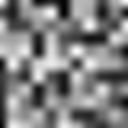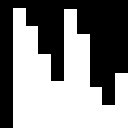Workshop GLSL - Noise - Chapter 6.4 - Linear Interpolation

Explanations
Let’s go to understand linear interpolation
#define PROCESSING_COLOR_SHADER
uniform float time;
uniform vec2 resolution;
float rand(float x){
return fract(sin(x * 12.9898) * 43758.5453);
}
float noise(float x, float frequency)
{
float v = x * frequency;
float ix1 = floor(v);
float ix2 = floor(v + 1.0);
Just linear interpolation
float fx = fract(x);
return mix(rand(ix1), rand(ix2), fx);
}
void main( void ) {
vec2 position = gl_FragCoord.xy / resolution.xy;
float y = noise(position.x + time * 0.1, 10.0);
float v = step(position.y, y);
gl_FragColor = vec4(v,v,v,1.0);
}
we see that bars are now interpolated but there is beacks on edges.
Full Code Source
#define PROCESSING_COLOR_SHADER
uniform float time;
uniform vec2 resolution;
float rand(float x){
return fract(sin(x * 12.9898) * 43758.5453);
}
float noise(float x, float frequency)
{
float v = x * frequency;
float ix1 = floor(v);
float ix2 = floor(v + 1.0);
float fx = fract(x);
return mix(rand(ix1), rand(ix2), fx);
}
void main( void ) {
vec2 position = gl_FragCoord.xy / resolution.xy;
float y = noise(position.x + time * 0.1, 10.0);
float v = step(position.y, y);
gl_FragColor = vec4(v,v,v,1.0);
}



